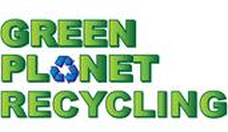In today’s digital age, technology has become an integral part of our lives. With the constant advancements and upgrades, electronic devices quickly become outdated, leading to a growing concern of electronic waste, also known as e-waste. Properly disposing of e-waste is crucial to protect the environment and prevent potential health hazards. This article provides a step-by-step guide to help you responsibly and safely get rid of e-waste.
Looking for a professional service? CONTACT US for a FREE QUOTE
As technology continues to advance, the problem of e-waste has become increasingly important. E-waste refers to electronic devices that are no longer in use or have reached the end of their life cycle. These devices can include computers, laptops, smartphones, tablets, printers, and other electronic equipment.
Understanding E-Waste
To properly get rid of e-waste, it is essential to understand the different types of electronic devices and their impact on the environment. E-waste often contains hazardous materials such as lead, mercury, cadmium, and brominated flame retardants, which can be harmful if not disposed of correctly.
Assessing Your E-Waste
Before disposing of your electronic devices, it’s crucial to assess their condition. Determine whether the devices are still functional or if they require repairs. This assessment will help you decide the appropriate course of action for each device.
Securely Back Up Your Data
Before parting with your electronic devices, ensure that all your important data is securely backed up. Transfer your files to an external hard drive, cloud storage, or another device to ensure you don’t lose any valuable information.
Clear Personal Information
To protect your privacy, it is essential to clear all personal information from your devices. Perform a factory reset or use specialized software to wipe your devices clean. This step ensures that no personal data is accessible to anyone else.
Reuse and Repair
Consider reusing or repairing your electronic devices if they are still functional or have minor issues. By extending the lifespan of your devices, you reduce e-waste and contribute to a more sustainable environment. Explore repair options or donate your devices to individuals or organizations in need.
Recycling E-Waste
Recycling is one of the most effective ways to dispose of e-waste responsibly. Look for certified e-waste recycling centers or programs in your area. These facilities have the necessary expertise and equipment to safely recycle electronic devices and extract valuable materials for reuse.
Donating Electronics
If your electronic devices are still in working condition, consider donating them to schools, non-profit organizations, or individuals who may benefit from them. Many charities and educational institutions accept electronics and provide them to those who cannot afford new devices.
Disposal of Batteries
Batteries, including rechargeable ones, require special attention during disposal. They can contain toxic substances that can harm the environment if not handled properly. Check local regulations for designated battery drop-off points or recycling programs.
Proper Handling of Hazardous Materials
Some electronic devices, such as old CRT monitors and televisions, contain hazardous materials that need to be handled carefully. These materials should not be disposed of in regular waste bins. Contact your local waste management authorities to find the appropriate disposal methods for such items.
E-Waste Collection Centers
Many cities and municipalities have dedicated e-waste collection centres where you can drop off your electronic devices. These centres ensure that the e-waste is properly managed, recycled, or disposed of in an environmentally friendly manner. Check with your local authorities for information on the nearest collection centre.
E-Waste Legislation and Regulations
Various countries and regions have implemented e-waste legislation and regulations to address the growing concern of electronic waste. Familiarize yourself with the laws and regulations in your area to ensure compliance and responsible disposal practices.
14. Environmental Impact of E-Waste
E-waste poses significant environmental risks if not properly managed. Toxic substances from improperly disposed electronic devices can contaminate soil, water sources, and the air, leading to adverse effects on ecosystems and human health. Proper disposal and recycling of e-waste are essential to mitigate these environmental impacts.
15. Conclusion
In conclusion, properly getting rid of e-waste is crucial for environmental sustainability and reducing health hazards. By following this step-by-step guide, you can responsibly dispose of your electronic devices. Remember to assess, back up data, clear personal information, reuse or repair when possible, recycle, donate, and dispose of hazardous materials correctly. Together, we can make a significant impact in reducing e-waste and preserving our planet for future generations.
Looking for a professional service? CONTACT US for a FREE QUOTE

